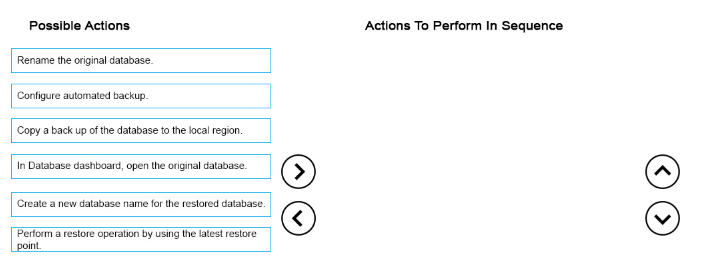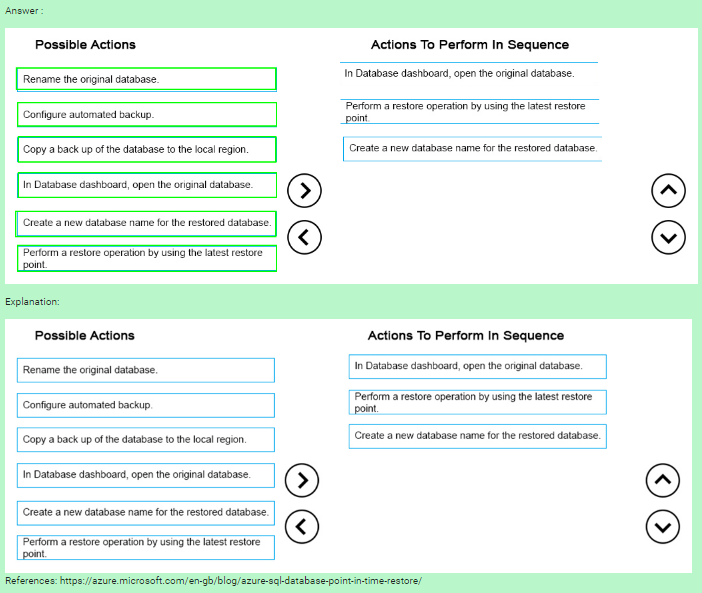READ Free Dumps For Microsoft- 70-533
| Question ID 13671 | You have an application that uses an Azure SQL Database.
The database becomes corrupt and is not usable.
You must configure point in time recovery to replace the database.
Which three actions should you perform in sequence? To answer, move the appropriate
actions from the list of actions to the answer area and arrange them in the correct order.

|
| Option A | 
|
| Correct Answer | A |
Explanation
| Question ID 13672 | You administer a Microsoft Azure SQL Database data base in the US Central region
named contosodb. Contosodb runs on a Standard tier within the S1 performance level.
You have multiple business-critical applications that use contosodb.
You need to ensure that you can bring contosodb back online in the event of a natural
disaster in the US Central region. You want to achieve this goal with the least amount of
downtime.
Which two actions should you perform? Each correct answer presents part of the solution.
|
| Option A | Upgrade to S2 performance level.
|
| Option B | Use active geo-replication.
|
| Option C | Use automated Export.
|
| Option D | Upgrade to Premium tier.
|
| Option E | Use point in time restore.
|
| Option F | Downgrade to Basic tier.
|
| Correct Answer | B,D |
Explanation Explanation: B: The Active Geo-Replication feature implements a mechanism to provide database redundancy within the same Microsoft Azure region or in different regions (geo- redundancy). One of the primary benefits of Active Geo-Replication is that it provides a database-level disaster recovery solution. Using Active Geo-Replication, you can configure a user database in the Premium service tier to replicate transactions to databases on different Microsoft Azure SQL Database servers within the same or different regions. Cross-region redundancy enables applications to recover from a permanent loss of a datacenter caused by natural disasters, catastrophic human errors, or malicious acts. D: Active Geo-Replication is available for databases in the Premium service tier only.